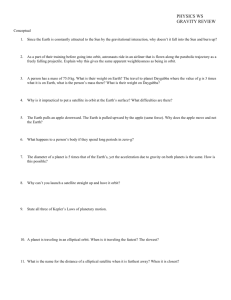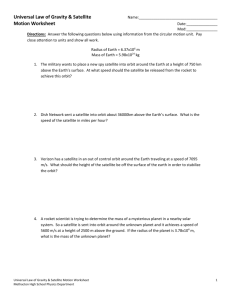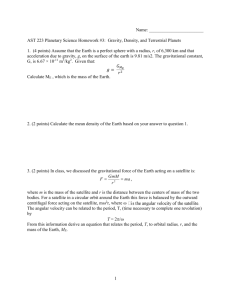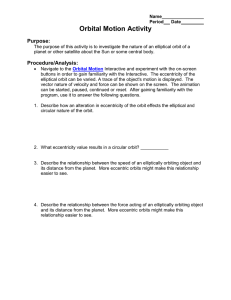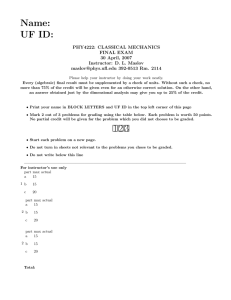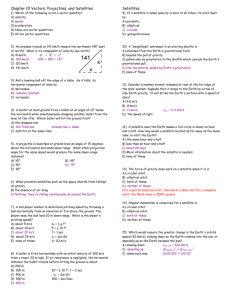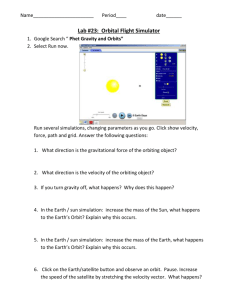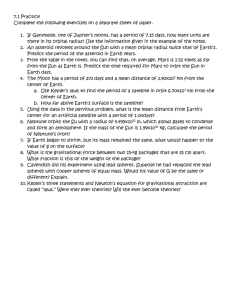Chapter 13 and 14 Problem Set You`ve almost made it. This is the
advertisement
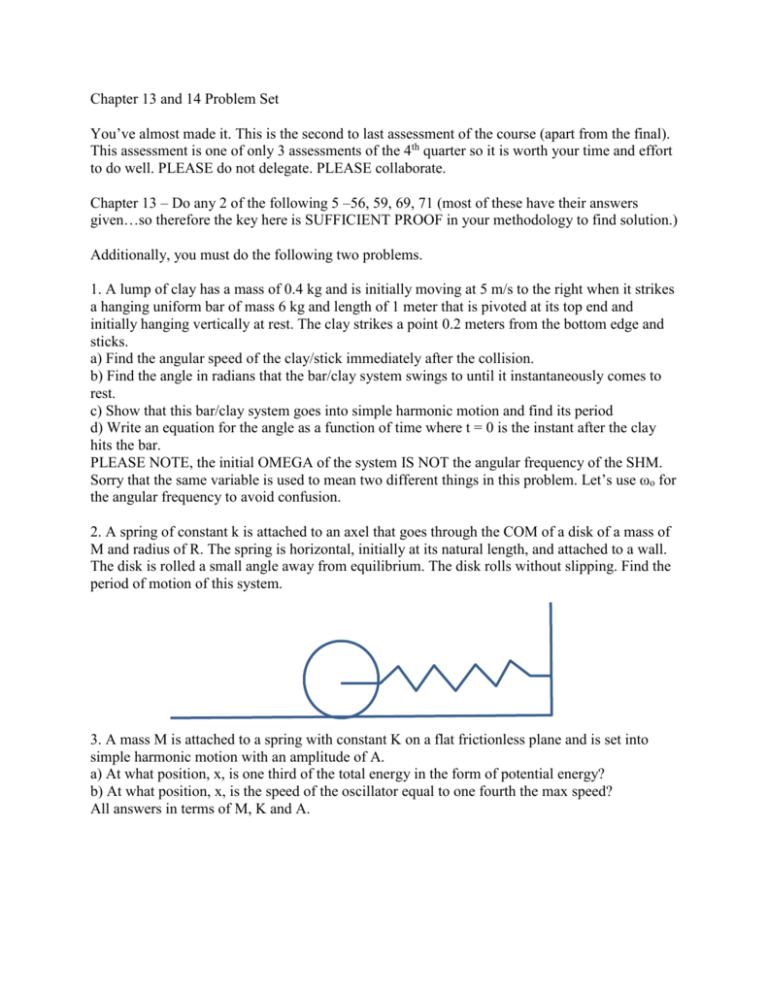
Chapter 13 and 14 Problem Set You’ve almost made it. This is the second to last assessment of the course (apart from the final). This assessment is one of only 3 assessments of the 4th quarter so it is worth your time and effort to do well. PLEASE do not delegate. PLEASE collaborate. Chapter 13 – Do any 2 of the following 5 –56, 59, 69, 71 (most of these have their answers given…so therefore the key here is SUFFICIENT PROOF in your methodology to find solution.) Additionally, you must do the following two problems. 1. A lump of clay has a mass of 0.4 kg and is initially moving at 5 m/s to the right when it strikes a hanging uniform bar of mass 6 kg and length of 1 meter that is pivoted at its top end and initially hanging vertically at rest. The clay strikes a point 0.2 meters from the bottom edge and sticks. a) Find the angular speed of the clay/stick immediately after the collision. b) Find the angle in radians that the bar/clay system swings to until it instantaneously comes to rest. c) Show that this bar/clay system goes into simple harmonic motion and find its period d) Write an equation for the angle as a function of time where t = 0 is the instant after the clay hits the bar. PLEASE NOTE, the initial OMEGA of the system IS NOT the angular frequency of the SHM. Sorry that the same variable is used to mean two different things in this problem. Let’s use ωo for the angular frequency to avoid confusion. 2. A spring of constant k is attached to an axel that goes through the COM of a disk of a mass of M and radius of R. The spring is horizontal, initially at its natural length, and attached to a wall. The disk is rolled a small angle away from equilibrium. The disk rolls without slipping. Find the period of motion of this system. 3. A mass M is attached to a spring with constant K on a flat frictionless plane and is set into simple harmonic motion with an amplitude of A. a) At what position, x, is one third of the total energy in the form of potential energy? b) At what position, x, is the speed of the oscillator equal to one fourth the max speed? All answers in terms of M, K and A. Chapter 14 – 67 4. A 1000 kg satellite is initially at rest on the surface of the earth. It fires its rockets until it is in a stable circular orbit that has a period of 12.6 hours. a) Find the altitude of this orbit. b) How much work must be done to get it to this orbit? c) What is the minimum additional work would need to be done to get it to escape from earth’s gravity well? 5. I’ll just be nice and provide the following information here: G = 6.67 x 10-11 Nm2/kg2 Msun = 1.991 x 1030 kg A certain satellite has a mass of 4000 kg and it is in an elliptical orbit around the sun. The satellite has a perihelion (meaning perigee with the sun) distance of 5.200 x 1011 meters away from the sun with a speed of 18.1 km/s at that point. The aphelion (meaning apogee with the sun) speed is 10.2 km/s. a) Prove numerically that this satellite is in an elliptical orbit rather than a circular, hyperbolic or parabolic orbit. b) What is the aphelion distance? c) What’s the period of the orbit? d) What’s the eccentricity of the orbit? e) How much work would need to be done to somehow get this mass out of the sun’s gravitational field? 6. In a different universe, let’s say that a bizarro Isaac Newton finds that the law of universal gravitation has the gravitational force inversely related to r1.5 rather than r2, such that: 𝐺𝑚1 𝑚2 𝐹𝑔 = − 𝑟̂ 𝑟 1.5 In such a universe, derive from base principles expressions for the following in terms of M, the mass of a planet, mo, a “test mass”/mass of a satellite, r the instantaneous distance from the center of the planet to the location of the test mass and R, the radius of the planet. Assume the planet has a uniform density. a) Find the orbital speed of the satellite in a circular orbit of radius r around the planet. b) Find the orbital period of this satellite in the above circular orbit c) Find the potential energy of the satellite at a distance r from the center of the planet where U( ∞ ) = 0. d) Find the total energy of a satellite in a circular orbit.

